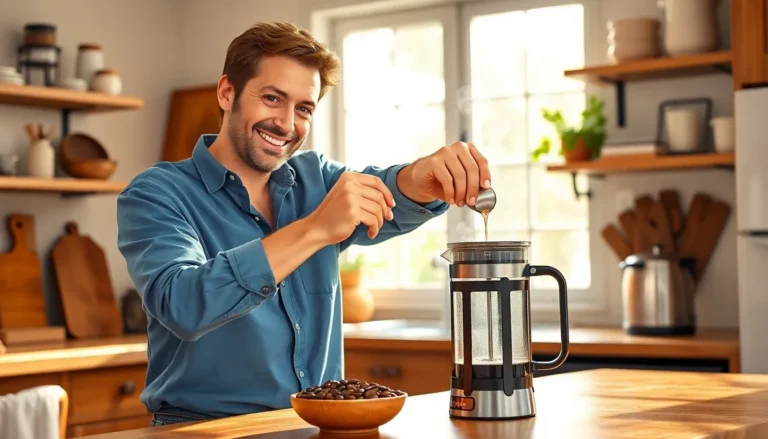Table of Contents
ToggleImagine transforming your living room into a cinematic paradise where popcorn flows like water and the couch becomes the ultimate throne. Home cinema installation isn’t just about fancy gadgets; it’s about creating an experience that makes every movie night feel like an event. With the right setup, even the most mundane Tuesday can turn into an epic blockbuster premiere.
But let’s face it—navigating the world of projectors, sound systems, and comfy seating can feel like a daunting quest. Fear not! This guide will break down the essentials, ensuring your home cinema dreams don’t just flicker on the screen but shine like a Hollywood star. Get ready to elevate your viewing game and impress friends and family with a setup that even the critics would applaud.
Understanding Home Cinema Installation
Home cinema installation involves multiple key components. Each element contributes to creating an immersive movie-watching experience. Equipment selection plays a vital role, impacting overall quality. Users often start with a screen selection, choosing between options like projectors or flat-screen TVs.
Projectors offer large display sizes, making them suitable for cinematic experiences. Flat-screen TVs provide clarity and convenience, often fitting better in smaller spaces. Sound systems come next, with choices ranging from soundbars to 5.1 surround systems. High-quality audio enhances engagement during films, creating an enveloping atmosphere.
Room layout affects installation as well. It’s essential to consider seating arrangements, sightlines, and acoustics. Properly positioning speakers and screens maximizes enjoyment. Lighting is another crucial factor. Dimmed lights create a theater-like environment, allowing for a captivating experience.
Additionally, wiring and cable management shouldn’t be overlooked. Neatly organizing cables prevents clutter and ensures safety. Smart home integration may also be desired, allowing users to control systems with ease. Such automation enhances convenience, streamlining the entire setup.
Choosing the right furniture significantly influences comfort levels. Reclining seats with cup holders enhance relaxation during viewing. Accessories such as popcorn makers or mini-fridges can add to the enjoyment, creating a true cinema feel at home.
Installation can be a DIY project or a professional service. Professionals may offer expertise and experience that simplifies the process. Determining the budget beforehand helps in making informed decisions about components and services available. This structured approach allows individuals to enjoy the full potential of their home cinema setup.
Planning Your Home Cinema

Creating an immersive home cinema experience starts with careful planning. The following considerations help shape a truly enjoyable environment.
Defining Your Space
Space selection is critical for optimal viewing. A dedicated room or a living room corner can serve the purpose. Consider dimensions that fit a projector or flat-screen setup. Positioning seats for ideal sightlines enhances comfort. Acoustics play a significant role; add carpets or curtains to minimize sound reflection. Lighting adjustments also improve the experience; dimmable lights or blackout shades provide flexibility. The overall layout should facilitate easy movement, ensuring accessibility for guests.
Budget Considerations
Establishing a budget is essential for focused planning. Determine how much to allocate towards equipment, including screens, projectors, and sound systems. Options range from affordable soundbars to high-end surround systems, affecting overall costs. Don’t forget installation expenses; professional help or DIY impacts budget choices. Prioritize key components based on personal preferences and needs. Allocate funds for furniture, accessories, and smart home integrations to enhance functionality. Saving on certain areas allows for splurging on features that matter most.
Equipment Selection
Selecting the right equipment is crucial for creating an immersive home cinema experience. Equipment choices directly impact the quality of the viewing and listening experience.
Projectors vs. TVs
Projectors offer larger screen sizes, often over 100 inches, making them ideal for cinematic experiences. TVs provide superior brightness and color accuracy, which enhances viewing in well-lit rooms. Those seeking a more traditional setup might opt for flat-screen TVs due to their ease of installation and minimal space requirements. Conversely, projectors typically need a darker room and more complex installation setups. Additionally, the choice depends on the audience’s viewing habits, as sports enthusiasts may favor a bright TV, while movie lovers might prefer the expansive feel of a projector.
Sound Systems
Sound systems elevate the home cinema experience, delivering rich audio to complement stunning visuals. Soundbars offer simple installations and improve TV audio significantly. For audiophiles, a 5.1 surround system creates a full immersive sound field, placing speakers strategically around the room. Systems with advanced formats like Dolby Atmos enhance the surround sound experience further. Choosing the right sound system also involves considering room dimensions and acoustics, as these factors affect sound quality and clarity. Prioritizing a quality sound system often leads to a more engaging viewing experience.
Installation Process
The installation process involves several critical steps to create an immersive home cinema experience.
Setting Up the Screen
Selecting the right screen is essential for maximizing viewing pleasure. Projectors require a dedicated space with appropriate wall colors and distances for optimal image size. Flat-screen TVs often find their place on walls or stands, but surrounding lighting impacts visibility. Elevating the screen height improves sightlines for seating arrangements. Mounting the screen securely prevents any disruptions during viewing. Determining the ideal distance from the screen depends on its size and the viewers’ preferences. Ensuring the screen fits the room layout guarantees a seamless integration into the space.
Wiring and Connectivity
Effective wiring and connectivity are crucial for a clean installation. Organizing cables reduces clutter and enhances safety. Running wires through walls or using cable conduits provides a tidier look. Connecting all components requires attention to detail, especially with audio and video sources. Utilizing high-quality cables improves signal strength, ensuring superior performance. It’s important to check whether the equipment is compatible to prevent connectivity issues. Testing the entire system before finalizing installation confirms everything functions as intended. Proper planning of cable management makes the overall setup more convenient and visually appealing.
Enhancing Your Experience
Creating an immersive home cinema experience goes beyond technology; it involves optimizing elements like seating arrangements and ambient lighting.
Seating Arrangements
Proper seating arrangements ensure everyone enjoys the film equally. Position seats at an optimal distance from the screen, typically 1.5 to 2.5 times the screen size’s diagonal measurement. Consider the number of viewers, with sectional sofas providing ample space for groups while recliners offer individual comfort. Arrange seats in rows or a slight arc to maintain sightlines and reduce neck strain. Prioritize placement for surround sound systems by aligning seats with speaker locations for an enveloping audio experience. Dedicated seating zones can enhance the overall feel, making movie nights exciting and comfortable.
Ambient Lighting
Ambient lighting plays a crucial role in defining the home cinema atmosphere. Dim lights for movie screening without complete darkness to avoid eye strain. Utilize adjustable lighting solutions, such as dimmer switches or smart bulbs, to set the desired mood. Wall sconces or LED strips enhance the aesthetic and provide indirect lighting, preventing distractions on the screen. Prioritize daylight management through blackout curtains or shades for the best picture clarity during bright days. Maintaining a balance between light and darkness elevates the cinematic experience significantly.
Creating a home cinema is about more than just technology; it’s about crafting an unforgettable experience. By carefully selecting equipment and considering room layout, anyone can transform their space into a cinematic haven. Attention to detail in sound, seating, and lighting plays a crucial role in elevating movie nights.
Whether opting for a DIY approach or hiring professionals, the right planning and execution can lead to impressive results. With the right setup, family and friends will enjoy an immersive viewing experience that rivals any commercial theater. Investing time and effort into the installation process ensures that every movie night becomes a memorable occasion.







